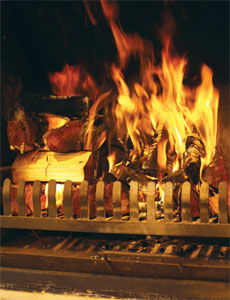Upfront
Burning the Evidence
The apparent discovery that seven masterpiece paintings stolen last fall from the Kunsthal Museum in Rotterdam were burned in the stove by the mother of the reputed theft ringleader is a nightmare scenario for insurers.
First, the insurance was handled by a syndicate of insurers led by Hiscox and that alone will take endless negotiations to sort out, said one top art insurance expert.
 Second, it may take a protracted process to determine if, in fact, the masterworks were burnt by Radu Dogaru in her home in a small town in Rumania. Only ashes in the stove remain for investigators and museum experts to work with.
Second, it may take a protracted process to determine if, in fact, the masterworks were burnt by Radu Dogaru in her home in a small town in Rumania. Only ashes in the stove remain for investigators and museum experts to work with.
Initially, Dogaru confessed to burning the paintings to protect her son from prosecution, according to the theories of law enforcement officials. Later, however, she recanted her testimony.
The artwork — paintings by Picasso, Matisse, Monet, Gauguin, Lucian Freud and Meyer de Haan — is valued at between $130 million and $150 million, “though they were insured for considerably less,” said London-based Richard Nicholson, executive director in Willis’s Fine art Jewelry and Specie practice.
Nicholson and others noted this would not be the first time stolen art was destroyed by thieves or their relatives.
“I recall a similar incident in 2001, following the arrest of a prolific art thief, Stephane Breitweiser, who allegedly stole works from some 170 museums across Europe between 1995 and 2001 and kept the stolen works in the bedroom of his mother’s home on the French/Swiss border,” Nicholson said. “On his arrest in November 2001, his mother destroyed dozens of Old Masters and shredded the canvasses in her garbage disposal.”
In another instance, in the spring of 2010, thieves stole $134 million worth of paintings from the Musee d’Art Modern in Paris — including works by Picasso, Braque, Leger, Matisse and Modigliani — only to throw them into a garbage bin in a fit of panic, where they were then compacted, he said.
Even when art thieves elude law enforcement officials, there are a number of reasons why it is hard for the thieves to sell stolen art at more than a fraction of their value on the open market.
One obvious reason is that paintings are highly identifiable and unique.
“An original artwork is like a fingerprint,” said Mary Pontillo, New York-based vice president at the DeWitt Stern Group. “It has certain brushstrokes, and obviously there’s the imagery. It’s not like a mass-produced piece of jewelry.”
Like others, Pontillo is quick to point to the worldwide effectiveness of the Art Loss Register, an evolving, computerized database that captures information about lost and stolen art, antiques and collectibles. The London-based database has become exceptionally useful for collectors, the art trade and law enforcement agencies around the world.
“An original artwork is like a fingerprint. It has certain brushstrokes, and obviously there’s the imagery.”
— Mary Pontillo, vice president, DeWitt Stern
In addition to the Art Loss Register, prominent art attorney Scott Hodes of Bryan Cave LLP in Chicago, noted that the Federal Bureau of Investigation has a skilled New York-based art theft unit. Hodes, who represents famed artist Christo among others, said the FBI unit hunts down stolen paintings and other artwork on a worldwide basis.
Adrienne Reid, Houston-based assistant vice president for Huntington T. Block, observed: “With these major works of art, it’s extremely hard, almost impossible, to turn them over after they’ve been stolen. Any auction house, museum or dealer worth its salt checks the Art Loss Register before they make any purchases or do any transactions with any works of art.”
Reid said that stolen paintings usually end up in the underground art market — often sold for contraband goods such as drugs. Or, they can end up sitting in storage for long periods of time.
Art thieves may also seek a ransom from the owners, the museum or the insurer, usually only at a fraction their true value, Reid added. A hot painting is typically worth just 10 percent of its book value or auction price, experts estimated.
In an ironic twist, it is sometimes artists themselves who destroy their own work. Claude Monet, for example, frequently destroyed his own work. The French Impressionist shredded 30 of his water garden paintings before they were set to be exhibited in 1908/1909. Monet’s increasingly poor eyesight and serious depression led him to frequently doubt his ability, according to flavorwire.com.
In another case, famed photographer Edward Steichen destroyed tens of thousands of prints and negatives in his later life. He experimented with many ways of destroying the photographs and negatives, including burning and shredding.
Famed contemporary German painter Gerhard Richter took a box cutter and matches to 60 of his photo-based paintings. Spiegel Online International estimated the works would have been worth upwards of $655 million today.










